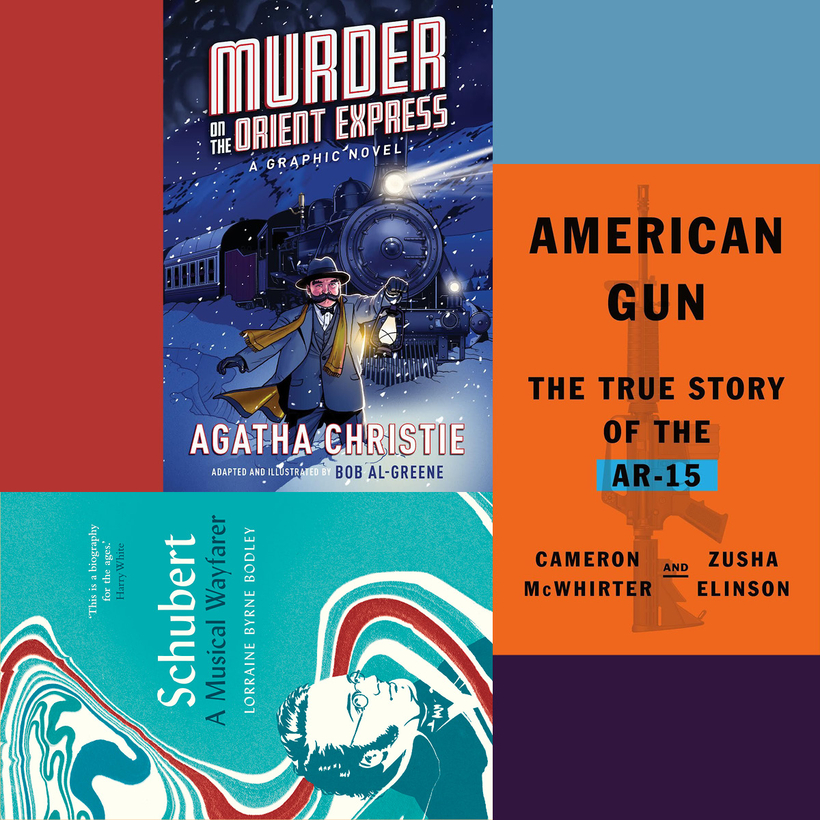What a brilliant idea. Take Agatha Christie’s best known mystery and turn it into a gorgeously illustrated graphic novel, with a cherubic Hercule Poirot sporting a moustache from ear to ear and the familiar cast of characters, who board the train at night in Stamboul (now called, of course, Istanbul) and wake up in the morning to find the very dead body of millionaire Samuel Edward Ratchett. Stopped in its tracks by snowdrifts, the train becomes both crime scene and interview room, since surely the murderer must be on board. Bob Al-Greene is a most talented illustrator, and he shows a playful wit that is not always apparent in the novel itself. For anyone who knows the plot, this graphic novel is a delight. And for those who don’t, this book will both surprise and delight.
Zusha Elinson
Eugene Stoner had the best of intentions. When the Marine veteran tinkered with his rifle in his Los Angeles garage in the early 1950s, all he had in mind was to create a better, lighter, and faster gun for the military. Out of this dream came the AR-15, but instead of simply being used by soldiers, it has emerged as the weapon of choice for grievance-addled men to kill fellow Americans. The authors, who work for The Wall Street Journal, have done a masterful and damning job tracing the birth and development, and rampant misuse, of the AR-15, and there are heartbreaking stories elegantly told of the destruction this weapon has wrought on families and towns across the nation. No scene is quite as poignant as when the authors visit Stoner’s old garage with Susan Kleinpell, his daughter. (The inventor died in 1997.) “It’s becoming so regular, these shootings,” she says as she walks back to the car. “Every time, I’m like, ‘Please God, don’t let it be an AR-15’—and it usually is.”
It is common to lament how much more music by Mozart we would be enjoying today if he had not died so young, at age 35, so let’s shed some tears for Franz Schubert, who died at 31 of syphilis. Few composers were as private as Schubert, so it is a welcome revelation from Lorraine Byrne Bodley’s fine biography that he was not simply the rabble-rousing wastrel that others have portrayed him as. What the author does is not just paint a nuanced and empathic man who really was a tortured genius; she explores his works in erudite detail. He studied composition in Vienna with Salieri (yes, the same one who famously taught Mozart). Luckily, his productivity was legendary, and he remains best known for his German art songs, composing more than 600 lieder. But there is so much more, including the devilishly tricky piano piece “Wanderer Fantasy” and Symphony No. 8, which hints at the despair he must have felt when he learned about his disease. Schubert, like Mozart, died broke, but the riches he left us perhaps are best exemplified by his song cycle Winterreise. Listen to Jonas Kaufmann’s rendition on YouTube and prepare to cry.
Murder on the Orient Express and Schubert are available at your local independent bookstore, on Bookshop, and on Amazon. American Gun will be available beginning September 26

